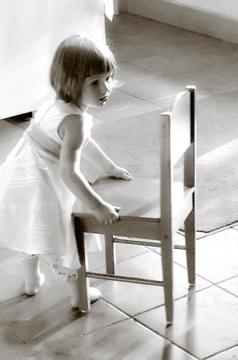When a toddler wants something, it’s crystal clear. They yell, scream, fuss, throw their bodies around, grab, and then when they get the object of their desire, it’s as if none of that just happened. They’re instantly content, but you know it’s temporary. Soon, they’ll want something else, and eventually it will be something that you can’t give them.
So what’s the best way to handle a toddler’s tantrums? One of my favorite tools for helping to calm infants is “The Happiest Baby on the Block” DVD by Dr. Harvey Karp. There’s a book by the same title as well. And apparently Dr. Karp had lots of parents asking him about how to handle toddler tantrums too, so he wrote a companion book and created another DVD called “The Happiest Toddler on the Block.” It’s great stuff.
But just in case you don’t have time to read the book and watch the DVD yourself, I’ll give you an overview of his tips and techniques to reduce the frequency, length, and intensity of tantrums.
The first concept he introduces is the idea that toddlers are like little cave-people. I really like this idea because it helps us understand who we’re really dealing with. Toddlers are opinionated and very clear about their desires, but their command of language is still quite limited, especially when they’re upset. They do a lot of gesturing, grunting, and making noises to get their point across, just like a Neanderthal might have. In general they’re uncivilized, and that’s part of their appeal. They are not little adults, they’re beings all their own.
That’s why reasoning with toddlers rarely works well. They don’t understand your long, complex sentences and three syllable words, at least not while they’re freaking out. So, seeing your little one as a mini cave-man, can help you figure out why the next tip is so important.
Learning to speak “toddler-ese” is the best way to help your little one know that you understand what she’s going through. And as I’ve said many times before, empathy is often the best way to handle most tantrums. When children feel heard and understood, they relax and become more cooperative. So how can we help toddlers feel heard and understood? We have to learn to speak their language.
Dr. Karp says that the most important elements to “toddler-ese” are matching intensity, keeping our phrases short, and using lots of repetition. Listen to your toddler when she’s trying to express a desire and you’re likely to see her pointing, grunting, “Uh, uh, uh!” and repeating what she wants “Up! Up! Up, Mama!”
So, let’s say you’re not able to pick your sweet toddler up because your arms are full of groceries. But you’re feeling worried, because you can see a tantrum about to come on. Rather than ignoring or reasoning, try saying something like, “Riley! You want up, up up! You want mama to pick you up, up up!” Be sure to match your child’s level of intensity. Then, watch your child as you empathize with her in her language. You’re likely to see her relax and become fascinated with you. At that point, you can explain the predicament, “Honey, I want to pick you up, but my arms are full of groceries, can you wait one minute please?”
There are lots of other great tips and tricks in Karp’s books and DVDs but these are the ones that jumped out the most and that I thought would be most helpful to share. I hope you’ll have a wonderful week and as always, I would love to hear about your own experiences with these ideas.
Warm hugs, Shelly



Oh well this story is really amazing or I may say interesting, thanks for sharing such a nice post.
Hey John, You’re so welcome! I’m glad you enjoyed it. And I’m curious, was there something in particular that really spoke to you?